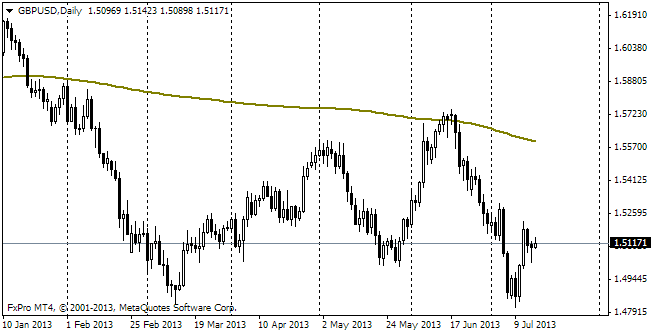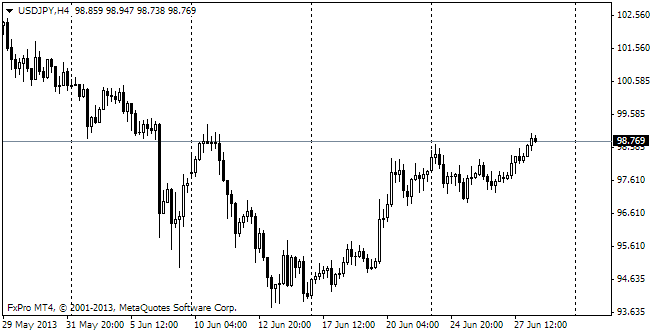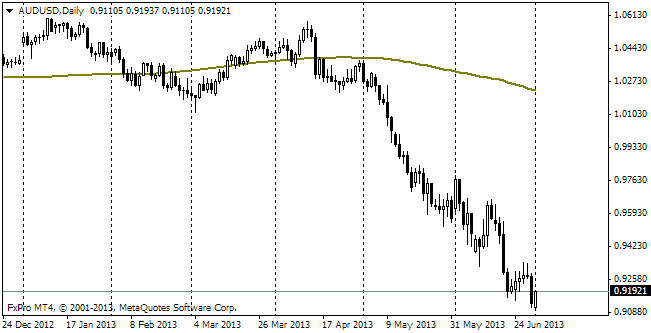EUR/usd
The risk demand showed up where no one expected it. We had thought that the meeting minutes would be tougher, but the reality proved to be quite different. fomc is trying to move off Bernanke's sharp limits which could become a guideline for the markets, when the Fed will raise the rate. Strictly speaking, it is not a sign of the extra-soft policy, but still doesn't let us speak about its toughening. Thanks to it the US stock markets grew by more than a percent and the dollar got weaker across the board (except for the yen). eurusd rose to 1.3870, which is a two-week high. Now trading is held at 1.3850, but it is quite possible that it will be shifted upwards since the EU market players have revised the prospects of the policy toughening in the USA. The market reaction also affected the debt securities, reducing the yield of US public bonds. The latter have recently been close to the yield of the once troubled EU countries. To be more exact, such countries as Italy and Spain are still troubled from the economic point of view, but the situation in the debt markets looks rather stable and calm. Today there will be the first placement of long-term Greek bonds since the beginning of the sovereign crisis in Europe, i.e. since 2010. These will be five-year bonds, whose yield, according to the forecasts, will make about 5%. Such low yields are explained not only by stabilization of the investor demand, but also by the ECB's rate cuts, carried out over that time. As you remember, in 2010 the major interest rate made 1.00%, while now it is at 0.25%. All other things being equal, it should contribute to decline of the long-term bond yields by approximately these very 75 percentage points.
GBP/USD
Today the BOE publishes its decision on the monetary policy. Absolutely no changes and comments are expected here. But even without it the sterling is at 1.68 and the last time the pair was above it was seen for about three hours on February 17. And before that, as far back as 2009, the pair reversed down from these levels. Then it was a pullback after the downfall during the financial crisis. Before the crisis the rate above 1.70 was quite normal. Nevertheless, we are still sure that now the economy will seriously slow down its growth pace due to such a high currency rate and together with the eurozone will be losing momentum in the second half-year, which will be pernicious for the rate of the pair itself.

USD/JPY
The dollar's depreciation affected usdjpy less than the growth of risk demand. Despite weakness of the dollar after the release of FOMC's meeting minutes, the pair stabilized slightly below 102.00. We don't exclude the further downward movement due to joining of the EU players, but at the same time believe that it's unlikely that the support at 101.50 will be broken.

AUD/USD
The Australian employment statistics proved to be much better than expected: unemployment fell down to 6.8% and employment grew by 18.1K against the supposed 7.3K. Such results extended the aussie's rally, which is now trading at 0.9400. Anyway, there were some hidden rocks. The decline in unemployment ensured reduction of Participation Rate from 64.9% to 64.7%. Exactly this caused unemployment reduction. The employment growth was ensured by part-time employees (+40.2K), the number of full-time employees shrank by 22.1K. Yet we shouldn't forget that a month before the ranks of full-time employees were joined by over 80K of newcomers.
